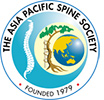Hip arthroscopy is an excellent surgery that has helped many patients restore their hip function and experience decreased pain originating from their hip. Hip arthroscopy, is a minimally invasive surgery that is performed through very small incisions to evaluate and treat a variety of painful hip conditions. Your doctor performs the hip arthroscopy surgery through the 2-3 small incisions made near your hip joint. One incision is used for inserting an arthroscope and the other incisions are used for inserting instruments to repair the damaged structures. An arthroscope is a pencil-sized instrument that has a small lens and lighting system at its one end. The arthroscope magnifies and illuminates the structures inside the body with the light that is transmitted through fibre optics. It is attached to a television camera and the internal structures are seen on the television monitor.
A variety of painful conditions can be treated using this technique. Many patients are able to return to activities that they were unable to do for years because of pain and limited range of motion.
If you have a condition that can be treated with hip arthroscopy, your doctor will discuss the surgery and all available options with you. He will also discuss about the risks and benefits of the surgery, instruct you about the incision care, activities to be avoided and exercises to be performed for faster recovery at your office visit.
Hip arthroscopy may be indicated in following conditions:
- Debridement of loose bodies: Bone chips or torn cartilage debris cause hip pain and decreased range of motion and can be removed with hip arthroscopy.
- Repair of torn labrum: The labrum lines the outer edge of the “socket” or acetabulum to ensure a good fit. Tears can occur in the labrum causing hip pain.
- Removal of bone spurs: Extra bone growth caused by injury or arthritis that damages the ends of the bones cause pain and limited joint mobility.
- Restoration and reconstruction of joint surfaces: Injury to the articular cartilage can lead to arthritis. If treated early by arthroscopy the development of arthritis may be delayed or even prevented altogether.
Evaluation and diagnosis: Patients with unexplained pain, swelling, stiffness and instability in the hip who had no success with non-operative treatments may undergo hip arthroscopy for evaluation and diagnosis of their condition.















